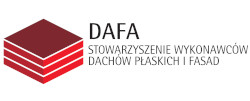Open Access (Artykuł w pliku PDF)
Effectiveness of pressure differential systems in staircases of high-rise buildings
mgr inż. Marcin Fryda, Politechnika Łódzka; Wydział Inżynierii Procesowej i Ochrony Środowiska
ORCID: 0000-0002-4679-0947
dr hab. inż. Dorota Brzezińska, prof. PŁ, Politechnika Łódzka; Wydział Inżynierii Procesowej i Ochrony Środowiska
ORCID: 0000-0003-4615-4454
Adres do korespondencji: Ten adres pocztowy jest chroniony przed spamowaniem. Aby go zobaczyć, konieczne jest włączenie w przeglądarce obsługi JavaScript.
DOI: 10.15199/33.2022.07.03
Oryginalny artykuł naukowy
Streszczenie. Zadaniem systemów różnicowania ciśnień w klatkach schodowych jest zapobieganie przedostawaniu się do nich dymu. Celem przeprowadzonych badań było określenie, jaki wpływ na warunki utrzymania nadciśnienia ma zmiana szczelności obudowy klatki schodowej. Wykazano, że zastosowanie klapy rozszczelniającej pozwala na znacznie bardziej precyzyjną i zdecydowanie szybszą regulację nadciśnienia wytwarzanego w klatce schodowej niż przy dotychczas stosowanych rozwiązaniach.
Słowa kluczowe: system różnicowania ciśnień; klatka schodowa; system ciśnieniowy; bezpieczeństwo ewakuacji; budynki wysokie.
Abstract. The purpose of pressure differential systems in staircases is to prevent smoke from entering them. The aim of the research was to determine what influence on the conditions of keeping the overpressure has a change in the airtightness of the staircase casing. It has been shown that the use of an unsealing flap allows for much more precise and much faster regulation of the overpressure generated in the staircase than with previously used solutions.
Keywords: pressure differential system; stairwell; pressure system; evacuation safety; high-rise buildings.
Literatura
[1] Brzezinska D, Fryda M. Implementation of new high-rise building staircase pressure differential system improvements. Build. Serv. Eng. Res. Technol., no. September, 2021, doi: 10.1177/01436244211044669.
[2] Polska Norma PN-EN 12101-6 – Systemy kontroli rozprzestrzeniania dymu i ciepła – Część 6:Wymagania techniczne dotyczące systemów ciśnieniowych – Zestawy urządzeń. 2007.
[3] Kosiorek M, Głąbski P. Projektowanie instalacji wentylacji pożarowej dróg ewakuacyjnych w budynkach wysokich i wysokościowych. Instr. ITB. 2002; 378.
[4] Standard NFPA Standard for Smoke Control Systems 2015 Edition. 2015.
[5] Standard European FprEN 12101-13: 2021 – Smoke and heat control systems – Part 13: Pressure differential systems (PDS) – Design and calculationmethods, installation, acceptance testing, routine testing and maintenance Systemes. 2021.
[6] Lay S. Pressurization systems do not work & present a risk to life safety. Case Stud. Fire Saf. 2014; 1 (1): 13 – 17, doi: 10.1016/j. csfs.2013.12.001.
[7] Butcher EG, Fardell PJ, Clarke JJ. Pressurisation as a means of controlling the movement of smoke and toxic gases on escape routes. Fire Saf. Sci. 1968; 704.
[8] Klote JH,Milke JA. Principles of SmokeManagement. Cornstock, W. 2002.
[9] Standard European FprEN 12101-6:2021 – Smoke and heat control systems – Part 6: Specification for pressure differential systems – Kits. 2021.
[10] Hobson PJ, Stewart LJ. Pressurization of Escape Routes in Buildings. Fire Saf. Sci. 1972; 958.
[11] Tamura GT.Air Leakage Data for the Design of Elevator and Stair Shaft Pressurization Systems. ASHRAE Trans. 1976; 82 (2): 179 – 190.
[12] Shaw C, Tamura G. Design of a Stairshaft Pressurization System for Tall Buildings. ASHRAE J. 1976; 18 (2).
[13] AkizukiY. Visibility and human behavior in fire smoke in SFPE Handbook of Fire Protection Engineering, Fifth Edition. 2016.
[14] Klote JH. Flow of Air and Smoke, in Handbook of Smoke Control Engineering,W. Stephen Comstock. 2012: 107 – 136.
[15] Szałański P, Misiński J. Laboratory tests of overpressure differential systems for smoke protection of lobbies. E3SWeb Conf., 2017; 22: 1 – 8, doi: 10.1051/e3sconf/20172200170.
[16] Wiche J, Majdański A. Pierwsze na świecie urządzenie wentylacyjne służące bezpieczeństwu ludzi z wykorzystaniem sztucznej inteligencji. Chłodnictwo & Klimatyzacja. 2012; 3: 42 – 44.
[17] Kula K, Pozorski K. Układ regulacji z modelem wewnętrznym sterującym obiektem nieliniowym. Zesz. Nauk.Wydz. Elektrotechniki iAutom. 2014; 40 (25): 65 – 68.
[18] Amin Rashidifar M, Abertavi A. a Novel Technique for Controller Tuning. Int. J. Appl. Control. Electr. Electron. Eng. 2014; 2 (2): 1 – 12.
[19] Fryda M, Brzezińska D, Dziubiński M. High rise buildings stairwells pressure differential systems tests and improvement solutions. Build. Serv. Eng. Res. Technol. 2021, doi: 10.1177/0143624420964313.
Przyjęto do druku: 30.06.2022 r.
Materiały Budowlane 07/2022, strona 11-16 (spis treści >>)



























